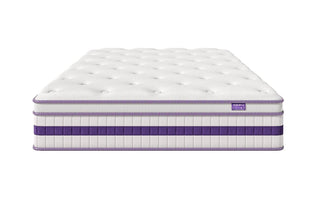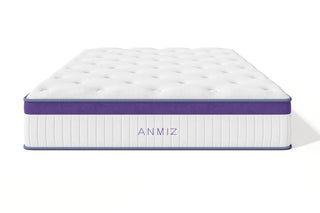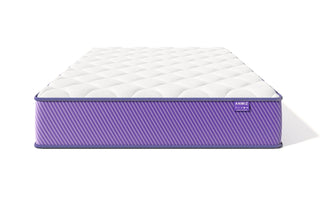The Ultimate Mattress Buying Guide: How to Choose a Mattress
We occasionally receive free products for testing and take part in affiliate programs, which means we may earn a commission if you purchase items through links on our site. For full details, please refer to our disclosure page.
Shopping for a new mattress can feel like an overwhelming task. The mattress market has expanded rapidly, offering more options than ever before. With so many types designed for various body types, sleeping positions, and comfort preferences, it’s no wonder mattress shopping can seem complicated. On top of that, innovative materials and advanced technologies make choosing the right bed even more complex.
If you’ve ever wondered how to pick the best mattress for your needs, Dweva Mattress is here to help. Take a deep breath — because we’ve made it simple. This comprehensive guide will walk you through every major factor to consider, helping you choose the perfect bed for restful, rejuvenating sleep.
Read on for our complete mattress buying guide, and when you’re ready to start exploring options, check out our detailed Dweva Mattress reviews for the best recommendations.
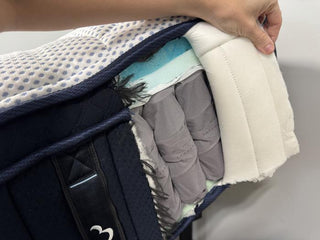
When to Buy a New Mattress
There’s no universal rule for when to replace your mattress. The lifespan depends on factors like material quality, frequency of use, and how well it’s cared for. Mattresses made from high-quality materials will naturally last longer, while cheaper ones may wear out faster.
Still, the Better Sleep Council provides several general signs that it might be time to consider investing in a new mattress:
- You’ve been using your mattress for seven years or more.
- You often wake up feeling stiff, sore, or achy.
- You notice you sleep better somewhere else — like at a hotel or on a guest bed.
- There are visible signs of wear, such as sagging, holes, tears, or staining.
- You feel tired or unrested even after a full night’s sleep.
- The mattress simply isn’t as comfortable or supportive as it once was.
If any of these sound familiar, your mattress might be past its prime.
What to Look for in a New Mattress
Once you’ve decided it’s time to upgrade, the next step is understanding what makes a great mattress. Here are the key factors Dweva Mattress experts recommend paying attention to before you buy.
Comfort and Cooling
Waking up with discomfort should never be part of your morning routine. A mattress should relieve pressure and promote relaxation, not cause stiffness or pain. Additionally, a good mattress should breathe well, preventing heat buildup overnight. If you find yourself kicking off blankets or waking up sweaty, your mattress may lack proper airflow.
Remember, every new mattress has an adjustment period, so use the trial period to ensure the comfort and temperature balance feel right for you.
Support and Neutral Spine Alignment
Regardless of sleep position, it’s essential to keep the head, neck, and spine in neutral alignment. A mattress that supports natural alignment reduces strain on muscles and joints, preventing stiffness and soreness when you wake up.
Lifespan, Longevity, and Durability
Buying a mattress is a long-term investment. Durable, well-constructed beds made from premium materials will easily outlast cheaper alternatives. High-quality mattresses also maintain their shape and support for years, saving you from frequent replacements.
Motion Transfer
If you share your bed, motion transfer matters. A mattress that minimizes motion ensures you won’t be disturbed when your partner moves. For couples, memory foam mattresses are particularly effective at isolating movement, allowing both sleepers to rest peacefully.
Edge Support
Strong edge support gives your mattress more usable space and prevents that “rolling off” feeling. A mattress with reinforced edges allows you to sit or lie comfortably near the perimeter, while weak edge support can make the bed feel unstable.
Budget-Friendliness
You shouldn’t have to break the bank to get a great night’s sleep. Fortunately, there are high-quality options available for every budget — from affordable essentials to premium luxury models. Evaluate your comfort and support needs first, then find the best value within your price range.
Safety
Before purchasing, take a close look at the manufacturer’s transparency and material sourcing. Pay special attention to components like flame retardants and foam certifications. This is especially important if you’re buying a crib or children’s mattress. Always check that your mattress still has its original safety tag, confirming compliance with industry standards.
Mattress Sizes
Choosing the right mattress size can be just as important as selecting the right firmness or material. Size affects both comfort and how well your mattress fits your space. Here are some things to consider:
- How much sleeping surface do you need (especially if you share your bed)?
- Will the mattress fit comfortably in your room while leaving space to move around?
- Is the size worth the price, or are you paying for space you don’t need?
Sometimes, upgrading in size adds comfort; other times, it’s unnecessary. Below is a breakdown of common mattress sizes to help you make the right decision.
Standard (Eastern) King and Split King
Dimensions: 76” x 80”
A King mattress offers the same length as a Queen but adds 16 inches of width — perfect for couples, co-sleeping families, or anyone who values space to spread out. For single sleepers, it’s usually more than enough room unless you’re filling a large master bedroom.
A Split King has the same total dimensions as a standard King but is divided into two separate Twin XL sections. This setup allows each side to have its own adjustable base or comfort preferences — ideal for couples with different sleep needs.
There’s no single “right” mattress size — it all depends on your space, sleeping habits, and budget. Evaluate your needs and lifestyle before deciding.
If you’re comparing two sizes, use these popular Dweva Mattress comparison guides to help make your choice:
Types of Mattresses
When shopping for a new bed, one of the first questions to ask is what type of mattress best suits your needs. With more styles available than ever, each offers unique benefits, drawbacks, and features. Here’s a complete overview of the main mattress types you’ll encounter when exploring the Dweva Mattress collection or other brands.

Innerspring Mattresses
When most people think of a traditional bed, they imagine an innerspring mattress. According to consumer research, innerspring models still make up more than 60% of total mattress sales. These mattresses use a system of metal coils for support and are topped with layers of soft materials such as foam, fiber, or additional mini-coils for comfort.
However, not all innerspring mattresses are the same. The coil type, gauge, and coil count all affect durability, firmness, and overall performance.
Types of Coils
- Bonnell Coils:
These are the oldest and most widely used coil design. Shaped like an hourglass, they provide balanced body support through their laced-together, continuous structure. The narrower midsection increases stability while the top and bottom rings add flexibility. - Offset Coils:
Found more often in higher-end mattresses, offset coils resemble Bonnell coils but feature squared-off ends. This design provides a more durable, quieter, and stable sleeping surface. - Marshall (Pocketed) Coils:
Barrel-shaped and individually wrapped in fabric, these coils are known for reducing motion transfer and enhancing body contouring. Because each coil moves independently, they adjust to your body’s natural shape while minimizing partner disturbance. - Continuous Wire Systems:
These coils are formed from a single piece of wire woven throughout the mattress. This design offers excellent central support, making it ideal for people who want extra reinforcement in the lumbar area.
The Range of Gauges
A coil’s gauge number measures its thickness. In mattresses, gauges typically range from 12 to 15, with lower numbers indicating thicker, firmer coils and higher numbers indicating thinner, softer ones. The coil gauge affects not only firmness but also durability — thicker coils tend to last longer and provide more robust support.
Coil Count
In general, a higher coil count means better quality and finer contouring. Coil numbers vary widely, from around 250 in budget models to over 1,000 in premium ones. Still, coil count alone isn’t everything — thinner coils with a higher count can feel softer than thicker coils with fewer springs. For best results, consider coil type, gauge, and count together.
Flipping vs. Rotating Coil Systems
Some innerspring or hybrid mattresses are two-sided and can be flipped, while others are one-sided and should only be rotated. In flippable models, comfort layers are placed on both sides of the coil system. In one-sided versions, the comfort layers are only on top.
Always check with the manufacturer or retailer to confirm whether your bed should be flipped, rotated, or paired with a specific foundation or box spring for optimal performance.
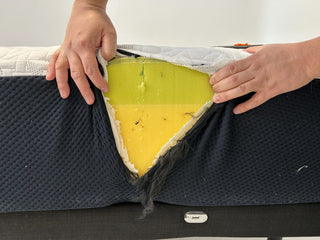
Foam Mattresses
Foam mattresses have become incredibly popular thanks to their pressure relief, motion isolation, and supportive contouring. Unlike coil-based systems, foam beds rely on layered foam materials to cushion and support your body evenly without that “bouncy” feel.
Several types of foam are commonly used, each offering unique comfort levels and performance traits.
Memory Foam
Memory foam — also known as viscoelastic polyurethane foam — is renowned for its ability to conform to the body and relieve pressure. Many sleepers find it helps align the spine and reduce pain, especially in the lower back and shoulders.
The density of the foam determines how supportive and durable it will be. Density is measured in pounds per cubic foot, and mattresses typically range between 2 and 5 lbs/ft³. Here’s how densities compare:
- Low-Density (3.5 lbs/ft³ or less): Softer, more breathable, but less durable.
- Medium-Density (3.5–5 lbs/ft³): A balanced feel with good support and comfort.
- High-Density (5 lbs/ft³ or more): Heavier, firmer, and more durable for long-term use.
Most mattresses use high-density foam in the base layer for better structural support. Higher density means more foam per cubic foot, which enhances durability and longevity — though it also increases cost.
It’s important to note that density doesn’t equal firmness. A high-density mattress can still feel soft, depending on how the layers are constructed. However, denser foam usually provides more consistent support over time.
Latex Foam
Latex mattresses share some benefits with memory foam but offer a different feel. They provide comfort and responsiveness without the deep “sinking” sensation. Latex also tends to stay cooler because of its natural breathability.
There are two main methods used to create latex foam:
- Dunlop Process: Produces a denser, more supportive foam that feels stable and firm.
- Talalay Process: Results in a lighter, airier foam available in varying softness levels.
Latex can be natural, synthetic, or a blend of both. Natural latex comes from rubber tree sap and is prized for its eco-friendliness and resistance to dust mites, bacteria, and mold. It’s also highly durable, often lasting 15 years or more with minimal sagging.
Gel Foam
To enhance temperature regulation, many foam mattresses incorporate gel-infused layers. The goal is to draw heat away from the body and promote airflow, helping sleepers stay cooler at night.
Different brands use varying gel technologies — from gel beads to phase-change materials — so results may vary. While scientific evidence is limited, many sleepers find that gel foam mattresses feel cooler and more breathable than standard memory foam.
Proprietary Blends and Specialty Foams
Some mattress brands, including Dweva Mattress, develop proprietary foam blends to achieve specific performance goals. These custom foams can vary in density, elasticity, and breathability.
If you’re considering one of these specialty options, ask the manufacturer or customer service team about how the foam feels, how it regulates temperature, and how it supports your body type.
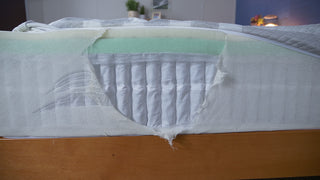
Hybrid Mattresses
Hybrid mattresses combine the strengths of both foam and coil systems. They typically feature a coil support core with comfort layers made of memory foam, latex, or other premium materials.
This design delivers a balanced feel — the bounce and durability of coils paired with the pressure relief and contouring of foam. A true hybrid mattress generally has at least 2 inches of foam above the coil layer.
Hybrids are a great choice for people who want both support and comfort. They’re especially popular among sleepers who like a touch of spring but still want that cushioned, adaptive feel.
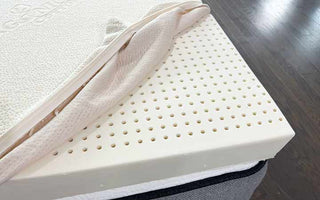
Natural Fibers and Natural Latex Mattresses
Some mattresses are crafted using organic or natural materials such as wool, cotton, and natural latex instead of synthetic foams or steel coils. These eco-friendly beds are often more expensive due to the higher cost of natural materials, but they appeal to consumers who prioritize sustainability and chemical-free comfort.
Natural latex in particular offers durability, breathability, and resistance to allergens. However, always verify whether the latex is 100% natural or a blend, as many products mix natural and synthetic latex for cost efficiency.
Adjustable Air Mattresses
If you’ve ever slept on a simple inflatable mattress, you’re familiar with the basic concept behind adjustable air beds — but modern versions are far more advanced.
These mattresses feature built-in air chambers that allow users to adjust firmness levels using a remote control or mobile app. For example, Sleep Number beds use air pressure systems that let each sleeper customize their side of the bed independently.
Most models also include foam or fiber comfort layers for added cushioning, giving them the look and feel of a traditional mattress while offering personalized comfort and pressure control.
Waterbeds
Rather than using coils or foam, waterbeds rely on a water chamber for support. They typically come in two styles:
- Hard-Sided Waterbeds: Feature a wooden frame enclosing the water chamber.
- Soft-Sided Waterbeds: Encase the water chamber in rigid foam and a zippered fabric cover for a more conventional look.
You don’t lie directly on the water chamber; instead, there’s a comfort layer of foam or fibers on top. Waterbeds were extremely popular in the 1980s, making up nearly 20% of the bedding market, and while they’re less common today, some specialty retailers still offer them for nostalgic or therapeutic purposes.

Smart Mattresses
Smart mattresses are an emerging category that combines comfort with cutting-edge technology. On the outside, they look much like traditional beds, but inside they contain sensors and smart features designed to improve sleep quality.
Some models track heart rate, breathing, and movement patterns, while others sync with smartphone apps to analyze sleep cycles. A few can automatically adjust firmness or temperature in real time to optimize comfort.
The goal of smart mattresses is to help users understand their sleep habits better and make small adjustments that lead to longer, deeper, more restorative rest.
Choosing the right mattress is about understanding your personal sleep preferences, lifestyle, and comfort priorities. Whether you prefer the classic feel of innersprings, the pressure relief of foam, the resilience of latex, or the customization of smart and adjustable beds, there’s a perfect option out there for you.
Mattress Tops
We’re closing out our overview of mattress types from the top—literally, the mattress top. Beyond choosing the right internal materials, you’ll also want to pick the topper style you prefer. You’ll often see terms like “pillow-top mattress,” “Euro-top,” “box-top,” or “tight-top.” What do these actually mean? Here’s a quick guide:

Pillow-top
Adds a softer feel at the surface. A layer of fiber or foam is stitched into the top panel to enhance plushness.

Euro-top
Similar to a pillow-top but thicker and denser. It’s sewn flush with the mattress edge rather than bulging above it, giving it a neater look. Sometimes also called “box-top.”

Tight-top
Has no extra padding or upholstery stitched on top. Tight-tops may feel soft but are firmer overall compared to pillow-style options.
Sleep Position and Comfort Levels
Along with construction and materials, consider your sleep position and preferred comfort level. These two factors go hand in hand with mattress type and bring you closer to your perfect fit.
Comfort levels describe a mattress’s firmness range. They typically run from Extra Plush or Plush (softer) to Firm, Extra Firm, or Luxury Firm (firmer). Some models offer one firmness level, while others provide multiple options. Many brands use a 1–10 scale, where 6.5 to 7 is considered medium-firm or “average.”
Finding the right comfort level depends on personal preference and your usual sleep position:
Back sleepers
Do best around 6.5–7 on the firmness scale—balanced support and comfort.
Stomach sleepers
Need more support under the hips and stomach, so firmer-than-average options are best.
Side sleepers
Place pressure on shoulders, hips, and knees, so softer or plusher mattresses with contouring support are ideal.
Combination sleepers
Since positions change, personal preference is key. Try several comfort levels to find the most balanced feel.
If you’re unsure about a model’s firmness, ask a salesperson or customer service rep. Also, check whether the mattress softens or maintains firmness over time.
What If I Have Specific Sleep Needs?
If you’re a hot sleeper, recovering from an injury, or managing medical conditions, you’ll need a mattress that addresses those needs.
If you’re under a doctor’s care, consult your medical provider first. Don’t rely solely on sales staff—they may not fully understand your health situation.
Here are some specific scenarios:
You Sleep Hot
Choose a mattress that promotes airflow.
- Coil systems allow air to circulate.
- Gel-infused foams and phase-change materials (PCMs) help draw heat away from your body.
PCMs change state depending on temperature, absorbing and releasing heat to keep a steady sleep surface.
Avoid basic all-foam beds unless they emphasize cooling or breathability.
You’re Recovering from an Injury or Have Chronic Pain
You’ll need a supportive mattress, but not necessarily a hard one. Look for foam layers that offer pressure relief and contouring to reduce soreness.
You’re Pregnant
Pregnancy often makes sleeping uncomfortable, especially when switching to side sleeping. This position can put pressure on hips, shoulders, and back. A foam mattress topper or a side-sleeper-friendly mattress can help.
You Have Clinical Medical Needs
People with advanced health needs should consider adjustable or hospital-grade beds. These allow you to raise or lower the mattress for comfort and easier mobility.
What About Mattress Support?
Different mattresses require different support systems. Using the right base ensures:
- Proper warranty coverage
- Even wear
- Full support and comfort benefits
Traditionally, innerspring mattresses came with box springs, which were placed beneath for bounce and stability. Now, with so many types available, terms like “box spring” and “foundation” are sometimes confused—but they’re not the same.
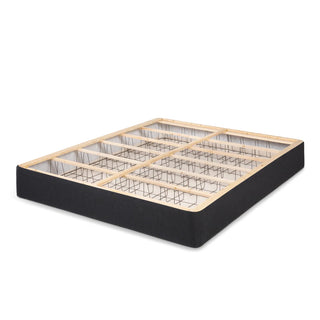
What Is a Box Spring?
A box spring is a rectangular wooden frame containing a grid of wire coils, often covered with a non-slip fabric. Coil shapes vary by model.
Box springs serve several purposes:
- Provide a flat, firm base for the mattress.
- Absorb motion and enhance flexibility when paired with coil mattresses.
- Raise the bed height for convenience (low-profile options also exist).
Which Mattresses Need a Box Spring?
Generally, double-sided innerspring mattresses benefit most from a box spring. If a manufacturer offers a matching one, use it—it’s designed to maintain mattress performance and reduce wear.
Always check the warranty; some brands require specific bases to keep coverage valid.
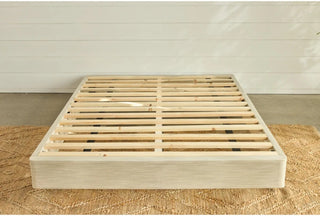
What Is a Foundation?
A foundation is a sturdy wood or steel base with slats or a solid surface covered in fabric. Its purpose is to support the mattress and prevent sagging—unlike box springs, which flex slightly for shock absorption.
Which Mattresses Need a Foundation?
Mattresses made from foam, latex, or non-flip coils usually perform best on a foundation. They require a flat, stable surface.
Some hybrid mattresses can sit on a box spring as well. Always check with the manufacturer for approved base types.
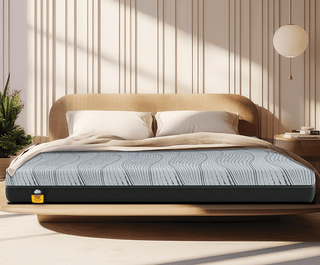
Platform Beds and Adjustable Beds
A platform bed combines a frame, headboard, and slatted base, providing a simple, flat surface. However, heavy mattresses may exceed the platform’s support limits, potentially voiding the warranty—always verify compatibility first.
An adjustable bed (or adjustable base) lets you raise or lower the head and foot sections using built-in hinges. Think of a hospital-style bed, but designed for home comfort.
Not every mattress works with an adjustable base. As the Better Sleep Council advises:
“Pair an adjustable frame with a quality adjustable mattress, as flexing adds wear. Only use mattresses designed for adjustable bases.”
Suitable types include foam, hybrid, and adjustable innerspring models.
Buying a Mattress In-Store

Wondering where to buy? You can shop in-store or online.
Common retailers include:
- Big-box stores
- Department stores
- Specialty mattress shops
- Furniture stores
Regardless of store type, you should find knowledgeable staff and a variety of models to test.
Tips for In-Store Shopping
- Have a plan: Know your preferences, sleep style, and budget before visiting.
- Lie down on the mattress: Spend 5–10 minutes in your normal sleep position. Most people’s first-night impressions match long-term comfort.
- Ask about return policies and warranties: Confirm trial length, fees, and coverage details.
- Negotiate: Specialty chains often have room to adjust prices. Bundle accessories or request a price match guarantee if possible.
Why Comparison Shopping Is Hard (and Negotiation Matters)
Mattress pricing can be tricky. Some retailers rename models or make slight material changes, making price comparisons nearly impossible.
Do your research and bring documentation (like sale ads or screenshots) to negotiate confidently. Signing up for newsletters or chatting online can uncover exclusive deals.
As a general tip, mattresses displayed in the back of the store may offer the most flexible pricing.
Buying a Mattress Online (Direct-to-Consumer)
Many shoppers now prefer to buy mattresses online, often through Dweva Mattress or popular marketplaces like Amazon. This skips retail markups and eliminates pushy sales experiences.
Pros and Cons
- Pro: Convenience and often lower prices.
- Con: You can’t try the bed before buying.
To address that, most bed-in-a-box brands offer free shipping and risk-free trials so you can test your new bed at home.
Tips for Online Shopping
Buying a Used Mattress
While reusing a mattress sounds eco-friendly, it’s rarely safe or practical. Used mattresses may contain unknown materials, allergens, or pests like bedbugs.
Modern safety regulations have changed dramatically, so older beds may not meet current fire safety or chemical standards.
That “free” mattress on the curb might save money upfront, but bedbug infestations can cost thousands to fix—and the discomfort isn’t worth it.
Mattress Prices: Worth the Investment?

Buying a mattress is a significant investment, and like most investments, the more you’re willing to pay, the better the product you’ll get. However, it’s still possible to find good mattresses at more affordable prices.
Here’s a breakdown of what you can expect at various price points, with prices reflecting full-price options for a Queen size mattress.
$250 to $500
At this price range, you’ll find the most basic options, which tend to have limited features and materials. Innerspring, foam, and perhaps a few hybrid models will be available. Brand names may not be widely recognized, so it’s important to do your research before making a purchase. Expect fewer coils and less dense foam layers, meaning the durability won’t be as high as more expensive options. Still, it is definitely possible to find a decent bed in this range.
If you’re shopping in this price range, check out the best affordable mattresses.
$501 to $1,000
In this price range, there’s a wide selection of mattresses, including hybrid models, adjustable air beds, and even some basic smart mattresses. While they may not offer the most luxurious options, you can expect these mattresses to be made from high-quality materials with decent trial periods and warranties.
If you’re shopping in this price range, check out the best mattresses under $1,000.
$1,001 to $2,000
At this price point, you can access premium materials like gel-infused foams, natural latex, and even organic mattress options. Well-known brands and popular bed-in-a-box retailers will have several models within this range, allowing you to compare mattresses in more detail.
If you’re shopping in this price range, check out the best mattresses under $2,000.
$2,001 to $5,000
Mattresses in this range feature the latest and most exclusive materials. These beds are often made with natural materials, and you’ll also find smart beds equipped with advanced technology. Expect to see a wide variety of options, from luxury retailers to top online brands.
$5,000 and Above
These are the top-of-the-line luxury mattresses, designed with the utmost attention to detail. For prices above $5,000, you’re looking at superb craftsmanship, with beds made by hand over the course of several days. These mattresses often feature the most natural materials, with a coil count exceeding 4,000.
If you’re looking for the best of the best, check out the best luxury mattresses.
Trial Periods & Warranties: What to Expect
Trial Periods
A trial period allows customers to try out a mattress at home for a set period without risk. This option has grown in popularity, especially with bed-in-a-box and online mattress sales, where you can’t feel the bed in person before buying. Trial periods give you the opportunity to confirm whether the mattress is a good fit before making a long-term commitment.
That said, while many mattress companies will accept returns, they generally won’t reuse the returned mattress. This can result in unnecessary waste, so it’s a good idea to be sure about your choice to avoid contributing to this issue.
Warranties
A mattress warranty is an important document that covers potential manufacturing defects or product failures. The Federal Trade Commission (FTC) mandates that warranties must be available for review before purchase—whether you’re shopping online or in-store.
Make sure your mattress has the required tag that says “do not remove under penalty of law,” confirming that it hasn’t been tampered with.
Key Things to Look for in a Mattress Warranty:
- Length of Warranty:
Mattress warranties vary in length. Many are listed in years, but some might offer “Lifetime” or “Limited Lifetime” coverage. Always read the fine print to confirm the exact duration. - Prorated vs. Non-Prorated:
Some warranties offer full reimbursement during the first few years, but after that, you may be responsible for a percentage of the mattress cost. - Sagging:
Sagging (especially in foam mattresses) is a common warranty issue. Be sure to check the warranty’s specifications on sag depth—if your mattress sags too much, knowing the coverage limits can help you get a replacement.
How to Void Your Mattress Warranty:
- Staining or Damaging the Mattress:
Fluid stains are one of the easiest ways to void your warranty. To prevent this, invest in a waterproof mattress protector right after purchase. - Incorrect Support:
If the mattress isn’t properly supported (for example, with the right foundation or box spring), the warranty may be void. Check the warranty for support requirements. - Failure to Rotate or Flip:
Some mattresses need to be rotated or flipped regularly for even wear. If you fail to do this, your warranty may be void. - Removing the Mattress Tag:
It’s illegal to remove the mattress tag, so always keep it attached to ensure the warranty remains valid. - Non-Original Owner:
If you’re not the original purchaser, the warranty may not apply. - Personal Preference:
Warranties do not cover dissatisfaction. If you simply don’t like the mattress, most warranties won’t offer a refund unless you’re within the trial period.
Mattress Delivery
Before you think about loading that mattress onto your car roof, it’s important to understand the different delivery options available for your new mattress. Here are some of the most common methods:
- Ship It Directly to Your Door:
Many retailers, especially bed-in-a-box brands, offer free shipping to your door. Just be sure to confirm if you need to be home to sign for it or if it can be left at your doorstep. - Upgrade to White Glove Delivery:
Some retailers offer a White Glove Delivery service, where a delivery team will bring the mattress to your bedroom, set it up, and even remove the packaging materials. This service usually comes at an additional cost but can be worth it for heavy mattresses or homes with stairs. - Hire Someone to Help:
Services like TaskRabbit allow you to hire someone to move the mattress for you if you don’t have the means to transport it yourself. - Bring It Home Yourself:
If you prefer a DIY approach, bring the mattress home in the back of your car or truck. If you don’t have a truck, consider borrowing one from a friend or family member. Use straps to keep the mattress secure.
If your mattress arrives and you notice any damage, be sure to inspect it before the delivery person leaves. Don’t hesitate to refuse it if there are any visible defects. Also, check that the “all new material” tag is still attached.
Mattress Protectors: Can’t Forget These!
Now that your mattress is home, it’s time to protect it. Mattress protectors do exactly that: they help protect your mattress from stains, allergens, and more. Here’s a closer look at why they’re so important:
- Waterproofing:
Protects against stains from liquids, ensuring you don’t void your warranty. - Combating Allergens:
A mattress protector acts as a barrier against dust mites, mold, and other allergens that can affect sleep quality and shorten the mattress’s lifespan. - Protecting Against Bed Bugs:
Some protectors offer a barrier against bed bugs, which can infest your mattress and cause significant distress. - Regulating Body Temperature:
Some protectors are designed to promote breathability, helping regulate temperature and keep you cool at night. - Providing Extra Comfort:
Certain mattress protectors double as mattress pads, adding a soft layer between the mattress and sheets for enhanced comfort.
Types of Mattress Protectors: Fitted vs. Encasement
- Fitted:
These are easy to put on and take off, similar to a fitted sheet. They are generally affordable and convenient. - Encasement:
Encasement protectors cover the entire mattress, all six sides, and usually zip around it. These are ideal for people trying to prevent allergens or bed bugs from infesting the mattress.
Why a Pillow Matters
When buying a new mattress, you might also need to invest in a new pillow. Here’s why:
The ideal sleeping position maintains neutral alignment of the head, neck, shoulders, and spine to reduce stress and pressure on any one part of the body. If you’ve been using an old pillow on a sagging mattress, your head and neck will feel different when switching to a firmer or more supportive mattress.
If you wake up with neck pain after sleeping on your new mattress, your pillow loft or firmness may need adjustment to fit your new sleep position.
How to Keep a Mattress Clean and in Good Condition
A mattress protector is a great start, but there are additional steps to keep your mattress in top shape and prolong its life.
Vacuum the Mattress
Vacuuming your mattress at least twice a year helps reduce sweat, dust, and allergens. If you can do this when rotating your mattress, that’s even better.
Address and Spot-Clean Stains Immediately
Stains can happen, but it’s crucial to clean them right away to avoid long-term damage. For light stains, lemon juice and salt can be a natural cleaner.
Deodorize the Mattress
Sprinkle baking soda over your mattress, let it sit for 24 hours, and then vacuum it up. This simple step can help eliminate odors and freshen up your bed.
Flip or Rotate the Mattress
To prevent uneven wear, flip or rotate your mattress regularly. Many manufacturers recommend rotating every three months. Check with your mattress brand for specific care instructions.
The Bottom Line
There’s a lot to consider when purchasing a new mattress. The more you understand your sleep preferences and needs, the easier it will be to navigate the buying process.
Remember, there is no one-size-fits-all mattress that works for everyone. Take your time, read the fine print, and use the generous trial periods or return policies offered by many brands.
Good luck with your mattress search!



